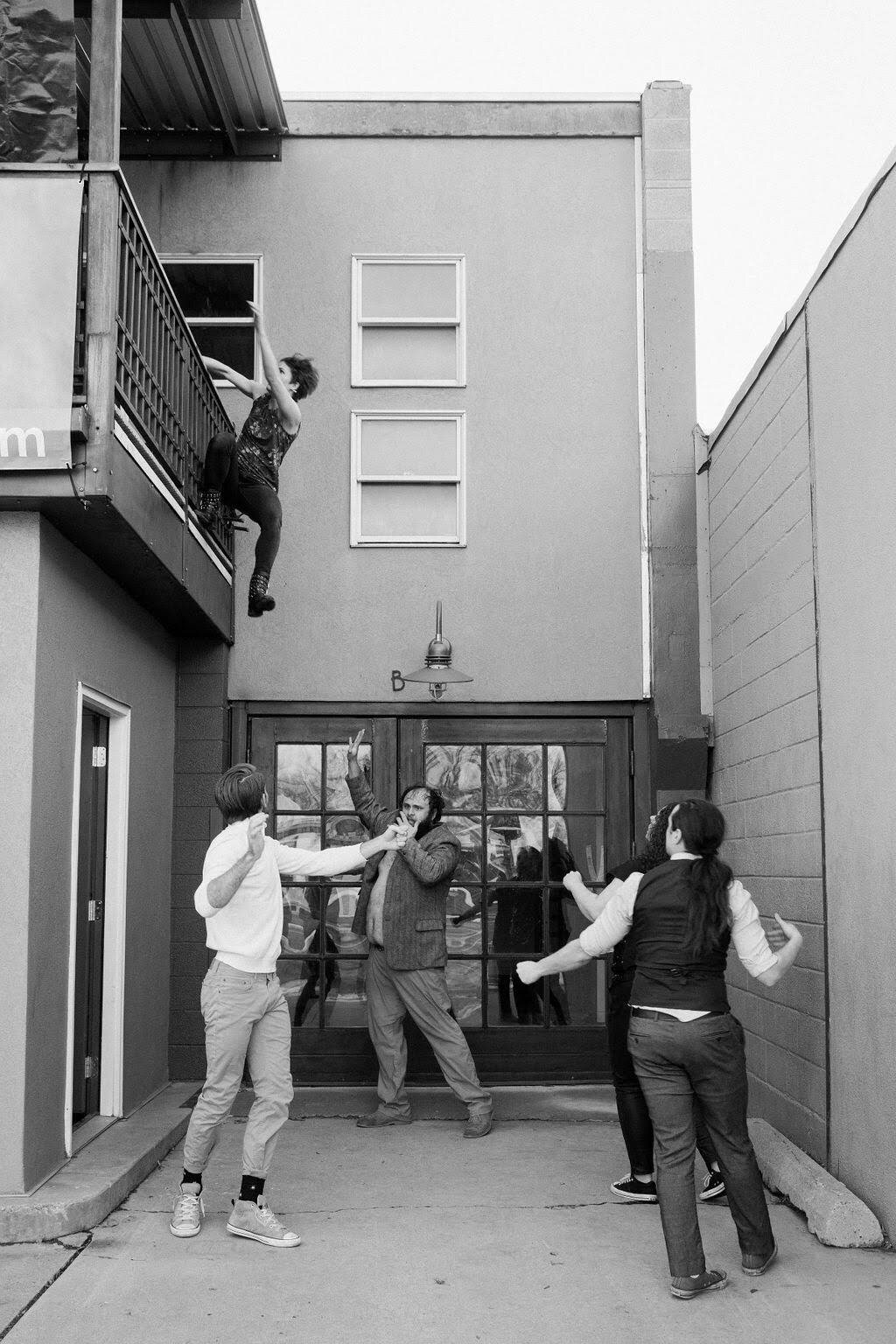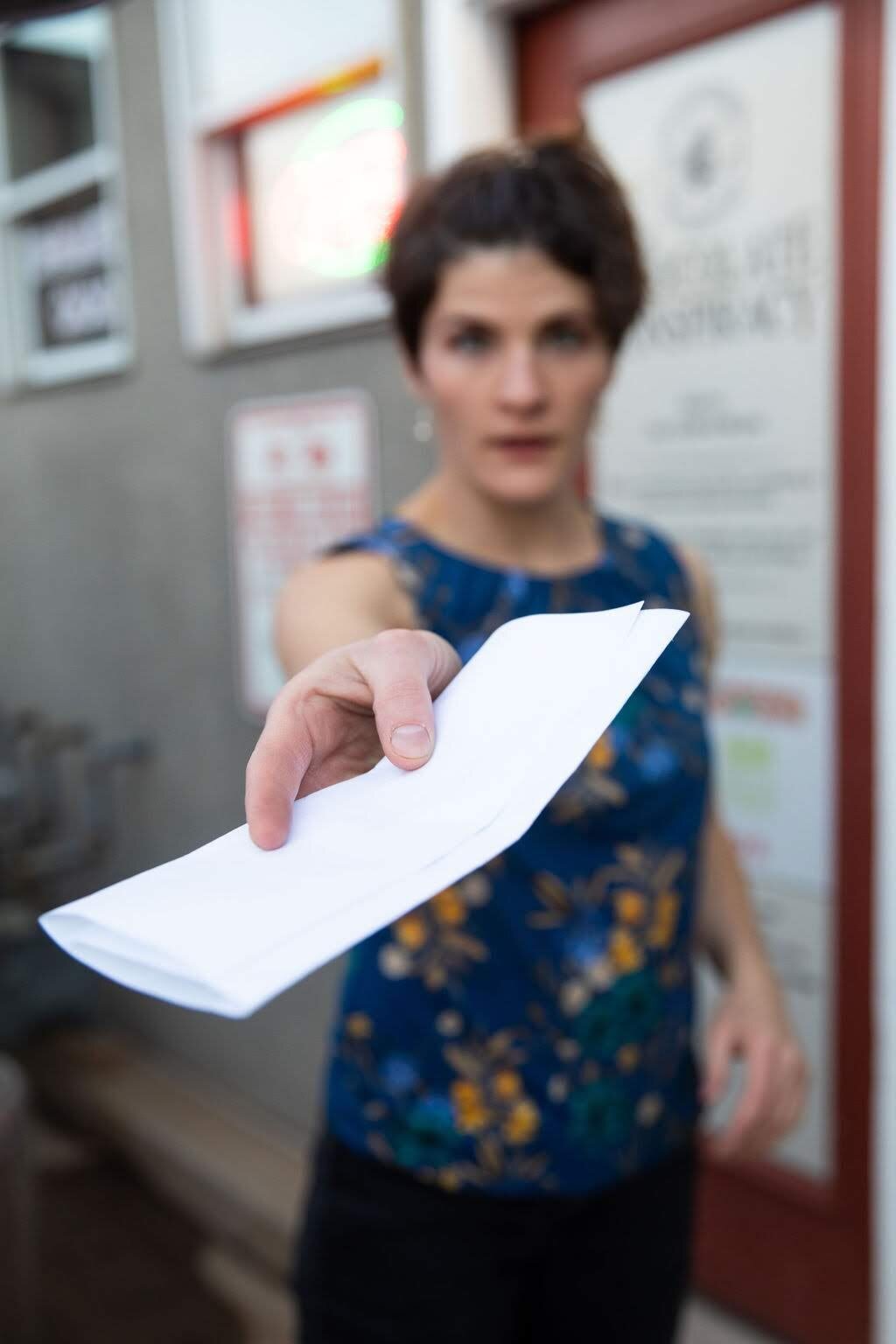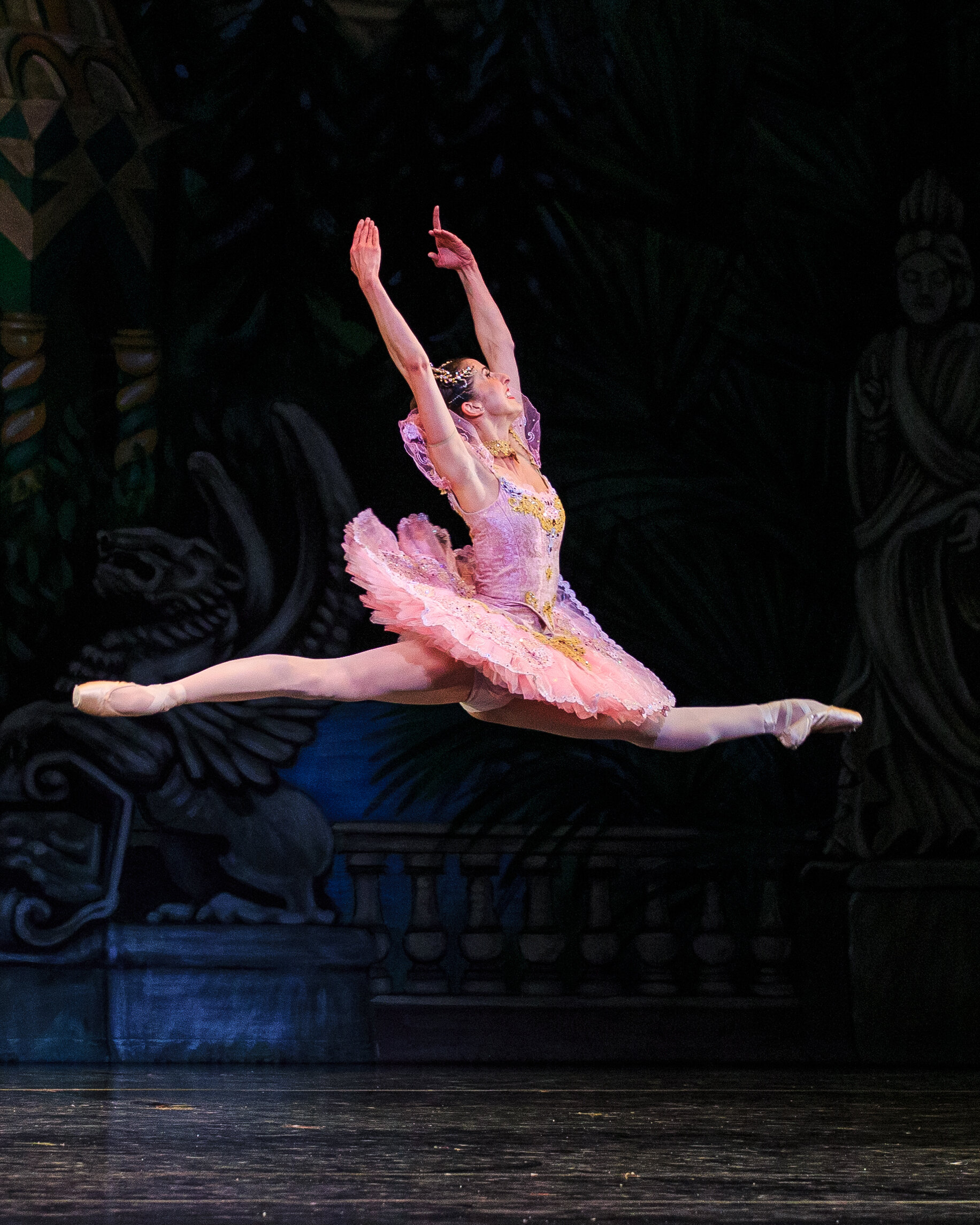SONDERimmersive’s Thank You Theobromine, in collaboration with The Chocolate Conspiracy, is an interactive dance theater production built around the story of a chocolatier who may have poisoned people. Groups of audience members tour downtown shop The Chocolate Conspiracy, guided by performers but allowed the freedom to explore within that framework. Attending when I did, toward the end of the show’s multi-month run, audience management was all figured out and the performers seemed well-rehearsed and well-connected to their characters.
On the sidewalk outside The Chocolate Conspiracy, audience members were initially greeted by Graham Brown, co-creator and choreographer, who gave a welcome speech that included carefully created guidelines for how to interact within the immersive production. Then, we were invited into a tent filled with objects that the sold-out, 30-person audience was encouraged to explore, while a performer took her time welcoming us, whispering to us secrets about characters in the story, serving us hot chocolate, and dividing us into five smaller groups with corresponding colored wristbands. This beginning was a bit underwhelming, and I overheard some audience members expressing impatience as we waited to enter the chocolate shop one group at a time. The excitement did intensify once we left the tent and entered the building.
Once inside, the performers were confident and firm with their verbal and physical guidance of the audience - pushing, pulling, coaxing, and demanding us to participate as they intended. They moved us from room to room, but we were also free to wander. The interactive component of the production involved both theater and dance, and there were often multiple scenes taking place at the same time, such that the music and verbalizations of one scene served as background noise for another.
One success in involving audience members in dancing included a phrase in which Rebecca Aneloski, “The Libra,” took someone’s hand and led them to the window and then back to the center of the room, easing them into the part where she instructed them to close their eyes, and then moving them through ballroom dance-esque postures and finally into a gentle yet sincere embrace. Aneloski then returned that participant to a bench and repeated the sequence with another, and then another.
I was very pleased with the use of space, both in the sense of performers interacting with the venue’s architecture, and also in the sense of their utilization of the venue to create unique perspectives from which they could be viewed. One of my favorite instances of this was some group choreography on a stairway: dancers thrashed between the wall and railing, with the audience standing beyond and below, and then one dancer lifted another into a back-roll to walk sideways along the wall.
Another good example of the use of space was when Aneloski rolled off the balcony railing to climb down to the driveway below, where she and Lauren Payne threw each other around and clambered up and down the street-level doors, exhibiting impressive strength and choreographic creativity. Payne boosted Aneloski up to a second story window, first to open it and then to climb into it, and seconds later pushed me out of the way, from where I was leaning over the balcony railing to watch Payne below, so that Aneloski could slide across the railing.
Lighting was especially effective in the room farthest to the west upstairs, during a scene toward the end in which the performers guided all audience members to the center of the room under a single bare bulb before weaving pathways among the crowd. In this scene, Michael Watkiss impressed me with his intentional focus and emotion as he performed a ritualistic gesture phrase, seemingly directed only at me.
The most memorable moment for me was one which not many other audience members got to see. Watkiss pushed me into a bathroom and left me alone there for a minute until Elizabeth Golden joined me. Golden mirrored my body position and facial expressions until, without verbally directing me to do so, she was able to lead me to mirror her. As we mirrored each other, she told me she was glad it was me, and began to nervously discuss her hunch that if I stayed here to take her place in purgatory then she could move on instead of me. As our mirroring game eased into a comfortable rhythm, her gestures perfectly led me to open a cabinet to find a jug marked “rat poison,” pour it into a cup, turn on the sink to add water to it, and raise the cup toward my mouth. Just before I would have had to decide if I really wanted to play along enough to drink whatever it was, Aneloski burst into the bathroom, emotional with criticism for Golden’s intentions, and snatched the cup away and poured it out. Then Aneloski led me downstairs where she handed me a chocolate bar, thanked me for coming, and pushed me outside into the softly falling snow.
Overall, the performers’ commitment to character, and specifically their eye contact, was important to creating the overall impact of the experience. The program credited four writers for the project, and I could tell that the performers were motivated by a specific and detailed story. However, the work of the writers seemed somewhat diminished by the mysteriousness which was brilliantly cultivated within the performance. I’d love to see a bit more clarity of story and characters to balance out all the intriguing mystery.
It is possible, however, that other audience members experienced greater, or different, clarity than I did, and the fact that each individual’s experience could be so unique is a magical element of this project.
SONDERimmersive’s Thank You Theobromine continues through Sunday, January 5 at The Chocolate Conspiracy in downtown Salt Lake City.
Photos above courtesy of Graham Brown.
Kendall Fischer is the artistic director of Myriad Dance Company, and has enjoyed performing opportunities with Voodoo Productions, SBDance, Municipal Ballet Co., and La Rouge Entertainment, among others. Her choreography has been performed by Myriad, Municipal Ballet, and at Creator's Grid, and her dance film project “Breathing Sky” received the 2017 Alfred Lambourne Movement prize.








